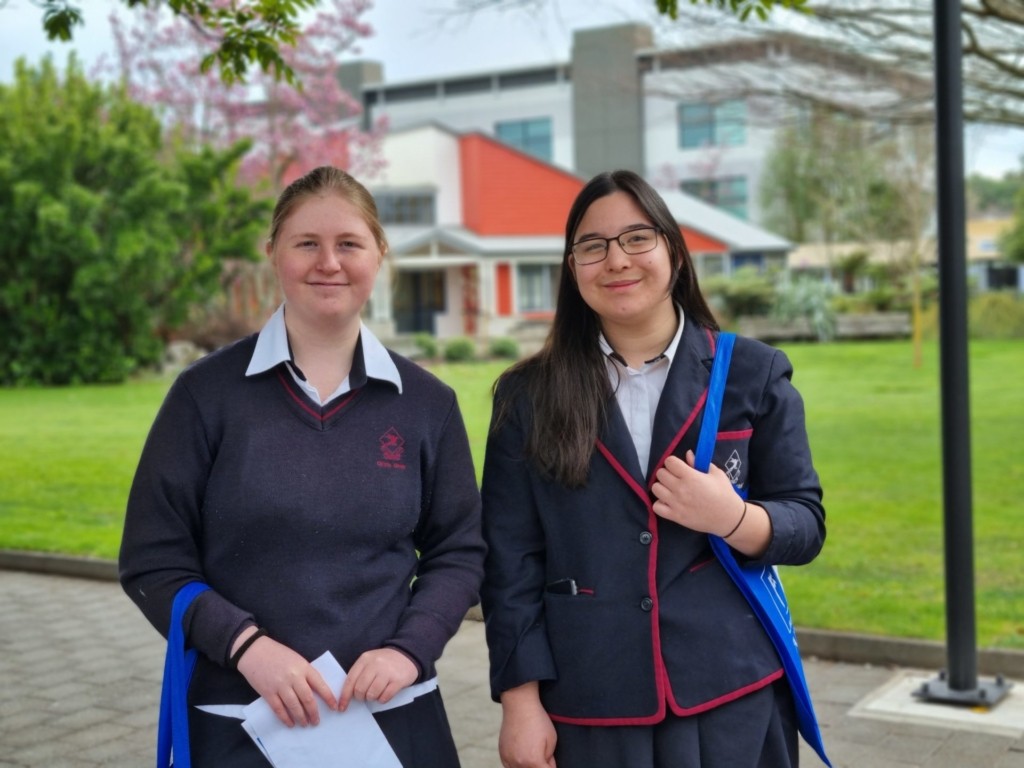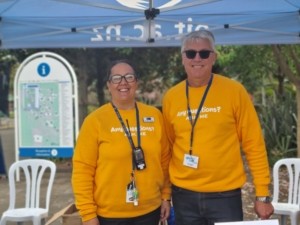
Hastings Girls’ High School students Olivia Gray and Soo-Jung Kim enjoyed gathering information about career opportunities at the recent Discovery Day held on EIT’s Hawke’s Bay Campus in Taradale.
EIT is playing an important role in keeping students in school through its Trades Academy programme but is also assisting early school leavers in finding their career path with the Education to Employment (e2e) service.
The Trades Academy, at EIT’s Tairāwhiti and Hawke’s Bay campuses, works with secondary schools to provide year-long trades programmes to help Year 12 students achieve NCEA Level 2 and prepare for higher-level study. Students attend Trades Academy each week, gaining vocational skills and getting hands on experience. Some schools have extended this to Year 11 and Year 13.
Education to Employment (e2e) encourages the coordination and support of employers and the local business community to be involved in vocational education, employment and development opportunities for young people. The primary goal of the e2e programme is to help connect industry with schools so that students can identify possible career pathways.
As part of this, EIT recently hosted a Discovery Day on the Hawke’s Bay Campus – an event that was attended by hundreds of senior secondary school students (Year 11-13) .
Discovery Day is designed to enable the students and public to engage with employers, industry, and educators to discover the vast range of career options available locally and beyond.

Paul Hursthouse, EIT’s Director – Business Relationships and Transitions (right) with Meriama Taufale, Team Leader – Engagement and Transitions were on hand to help students at the recent Discovery Day held on EIT’s Hawke’s Bay Campus in Taradale.
Paul Hursthouse, EIT’s Director of Business Relationships and Transitions, says there has been a recent trend of students who normally would have left school in Year 12 to take up a trade, now staying on to Year 13.
“Some High schools were finding it challenging to create a robust curriculum for these returning students, so they asked us if we could develop a curriculum to accommodate the needs of those students.”
“We have, therefore, developed, in the Trades Academy, a Level 3 engineering, Level 3 automotive, Level 3 building and construction, and Level 3 Computing, among others.
Paul says that the programmes offered by the Trades Academy allow school students to have a taste of the trade they are interested in while still in the structured environment of high school.
“These students have the best of both worlds – they remain in school and are able to get their NCEA qualifications while they are training in their chosen trade every week at EIT.”
Paul says that e2e is a complimentary service that EIT offers that spans all the pathway programmes it has for high school students to bridge the gap between secondary education and either a tertiary opportunity or a career option.
“e2e does not seek an educational outcome but is rather a service that connects industry with high schools, and through them the appropriate students.”
Paul says that all EIT’s programmes and services are aimed at smoothing the pathway from secondary education to tertiary study or direct employment.
“We believe we have a lot to offer students and we are happy to work with them to facilitate a transition to their pathway of choice,” says Paul.

